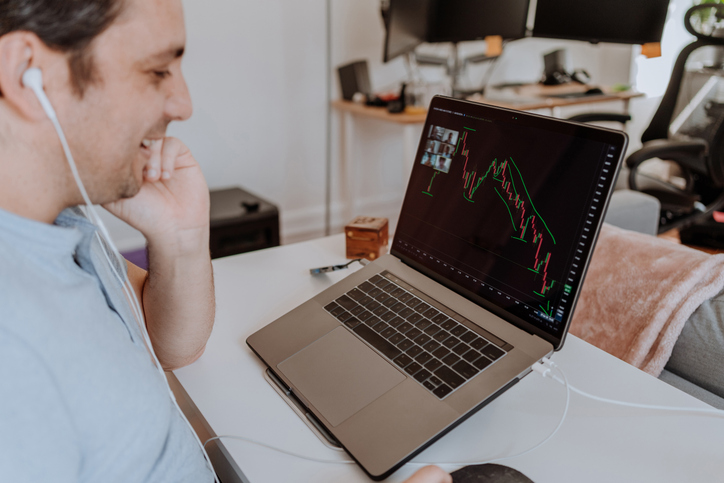Many investors use mutual funds and exchange-traded funds (ETFs) to diversify their portfolios, even when their balances are small. But there’s an alternative that offers several potential advantages to mutual fund and ETF investing. Known as direct indexing, it’s a technique that’s been available for decades, but costs and technological hurdles made it appealing primarily to larger investors. But that’s changing. Here’s what you need to know about direct indexing so you can decide if it’s right for you. Consider working with a financial advisor if you want to diversity your portfolio, but don’t have the experience or resources of professional traders.
What Is Direct Indexing?
With direct indexing, investors buy all the shares in an index, so they directly own every security in an index. Wealthy investors and large companies have used this strategy for decades to take advantage of the tax benefits of individual stock investing, while still replicating the performance of indexes. Several factors have contributed to the broader use of direct indexing.
Firstly, the rise of online brokerage accounts has made direct indexing an affordable option for the average investor. Trading commissions are now $0 at many brokerage firms.
Secondly, with fractional share investing offered by many financial services companies, like Schwab and Fidelity, investors can create their own direct indexing portfolios. For customers who want professional advice and portfolio management, Aperio and Parametric offer customized portfolios for investors that replicate index performance while benefiting from tax strategies.
Advantages of Direct Indexing
While these two above-mentioned factors have enabled retail investors to move into direct indexing, it’s the advantages that have created the motivation to do so.
Tax Efficiency
Direct indexing allows you to make individual moves within the portfolio to take advantage of tax-loss harvesting opportunities and defer gains on stocks that have risen in value. Investors often are unaware of the tax consequences of their mutual fund or ETF investments until distributions are made or they receive a Form 1099 at the end of the year – when there is little they can do to manage them.
Flexibility

Index funds, whether mutual or exchange traded, often rise or fall in value because of the changes in the price of only a few securities in the index. So, for example, if most securities in an index rise, but only a handful decline, direct indexing empowers the investor to harvest tax losses on the handful of losers while the rest of the securities in the direct index appreciate. Further, direct indexing lets investors realize gains and rebalance when it is in their best interest rather than when a fund manager decides to.
Risk & Social Criteria Customization
Index funds buy every stock in an index, even those that don’t align with your risk profile or beliefs. With direct indexing, you can choose to eliminate certain stocks from your holdings or replace them with an alternative, something you might do if you find a particular stock’s beta too high or you have ethical or moral objections to a specific corporation’s activities.
Lower Costs
When you own the stocks of an index individually, you can eliminate the operating expense ratios of index funds and ETFs, some of which are large enough to weigh heavily on a fund’s returns. While there are still transaction costs when buying and selling, many popular brokerages have eliminated trade commissions. Direct indexing also makes it possible to dollar-cost average into the market without significant fees.
Disadvantages of Direct Indexing
Before deciding to compete with index funds, be aware of the challenges and responsibilities involved.
Actively Managed
While index mutual funds and ETFs are largely hands-off, direct investing portfolios must be actively managed. The account owner needs to rebalance, replace stocks when indexes change and take advantage of tax benefits. In other words, this is probably not something for the passive investor.
Fractional Shares
Because you are purchasing individual stocks to replicate the index, most portfolios will need to purchase fractional shares based on the size of their balance or ongoing contributions. Not all brokerages are set up to handle fractional shares. Some investors have to change brokerage companies to implement this strategy.
Performance Tracking Challenges
ETF and mutual fund investors receive relatively simple statements with just a handful of ticker symbols to track. Comparing mutual fund and ETF performance to indexes is easy to do. With direct indexing, your statement may contain hundreds of individual stocks. This makes it more challenging to track overall performance and to compare against an index.
Bottom Line

Direct indexing is gaining popularity among average investors. They can now replicate the performance of their favorite mutual funds and ETFs while having more control over their investments. With $0 trading commissions and fractional share investing offered by many brokerages, any investor can implement this investment strategy. Direct indexing offers the attractive benefits of mutual funds and ETFs – low-cost investing, diversification and matching index performance – while having greater control over the composition and taxation of their portfolio.
Tips on Investing
- Investing in shares of any public company requires an understanding of how equity markets work and how the company’s fundamentals compare to others in its industry and competing investment opportunities. SmartAsset’s free tool matches you with financial advisors in your area in five minutes. If you’re ready to be matched with local advisors who will help you achieve your financial goals, get started now.
- In addition to working with a financial advisor be sure to make use of our free investment calculator to give you a quick estimate of how your portfolio will do over time.
Photo credit: ©iStock.com/JuSun, ©iStock.com/Michele Pevide, ©iStock.com/Laurence Dutton
